Experts share their views on the CPC's governance
X 关闭
LI MIN/CHINA DAILY
 (相关资料图)
(相关资料图)
Editor"s note: July 1, 2023, marks the 102nd anniversary of the founding of the Communist Party of China. Three experts share their views on the Party"s governance and the far-reaching impacts of its leadership on the country"s economy, trade, people"s livelihoods and culture.
Growth miracle stuns world
By DAN STEINBOCK
Starting from the late 1970s, when the reform and opening-up policy was launched, the Communist Party of China has focused on de-collectivization of agriculture, opening up the country to foreign investment and advanced technology, and encouraging entrepreneurship.
With nationwide industrial takeoff, economic reforms broadened, while price controls, and protectionist policies and regulations were lifted.
Nothing exemplifies the success of China"s reform and opening-up more than Shenzhen. In 1979, it was a poor fishing village with some 20,000 residents struggling at subsistence level. Today, it has an urban population of almost 18 million and its per capita GDP (nominal) is more than $27,000, on par with Portugal and Bahrain. In this process, a special catalyst role was played by the special economic zones, which were initiated in coastal China.
In 2018, economic development in Guangdong province moved to a new stage with the launch of the Greater Bay Area, China"s "Silicon Valley".
Initially, like Western Europe and Japan in the postwar era, Chinese companies used to imitate global technology leaders. Today, Chinese innovators and high-tech companies such as Huawei and ByteDance (Tik-Tok"s parent company) are being imitated by global competitors and cooperators. Hence, the US" efforts to contain Chinese innovators in the name of "national security".
In four decades, Shenzhen has transformed itself from a poor village to one of the most advanced metropolises.
When reform and opening-up were launched in the late 1970s, the standard Western reform packages were shaped by the "Washington Consensus", which promoted disruptive liberalization, deregulation and privatization across the board. Such "reforms" primarily benefited foreign investors, domestic oligarchs and the informal economy, not the ordinary people.
That was not the Chinese path. The Chinese path favors stability, gradual advances and pragmatic experimentation.
While the CPC leadership with former president Jiang Zemin as its core further developed socialism with Chinese characteristics — through his "Theory of Three Represents" — it also launched a campaign against corruption in the 1990s. What paved the way for a decade of export-led double-digit growth was China"s membership of the World Trade Organization in 2001. And former president Hu Jintao highlighted the importance of "China"s peaceful development".
More important, under President Xi Jinping"s leadership, policies have accelerated China"s post-industrialization process.
Today China"s growth may be slowing relative to the recent past, but its per capita income continues to rise rapidly. In the new era, rebalancing builds on world-class innovation and expanding consumption. Moreover, the eradication of extreme poverty in a developing country of more than 1.4 billion people is a historic achievement.
It is this high-quality growth that supports the rise of the world"s largest emerging middle-income group. In 2017, a set of bold objectives for 2035 were adopted as staging posts to achieve the second centenary goal of developing "China into a great modern socialist country that is prosperous, strong, democratic, culturally advanced, harmonious, and beautiful" by the middle of this century. The goal is also to make China a global leader in science and technology, creating a green economy, and reducing the urban-rural income gap.
Through the 20th century, the major economies touted globalization that benefited mainly the West. Their exclusive globalization was supported by the World Bank, the International Monetary Fund, the World Trade Organization and other multilateral institutions. This status quo prevailed as long as the West drove global growth — that is, till the 2000s.
But the West"s exclusive globalization is de-integrating, thanks to the United States" two decades of "global war on terror" and half a decade of trade wars, the pandemic-induced global depression, the role of the US and NATO in inciting the Russia-Ukraine conflict, and global de-integration. In fact, the US" desperation to contain China"s peaceful rise is part of a broader effort to maintain Western supremacy.
As a percentage of the world"s GDP, world trade is at the level where it was around 2006. Worse, global investment net inflows as a percentage of global GDP are less than half of the level in 1999.
And as migration flows are being blocked, the number of forcibly displaced people has soared to almost 110 million, which is nearly three times the level of 1945 after the end of World War II.
Such a state of affairs is inhuman, destructive and untenable.
As secular stagnation is spreading in the West, growth prospects rely increasingly on China and other large emerging economies, which have fueled global growth since the late 2000s. These prospects are supported by the creation of the Asian Infrastructure Investment Bank, the BRICS New Development Bank, the Belt and Road Initiative, and the promotion of de-dollarization in bilateral trade.
The new emerging world economy now thrives on inclusive globalization, which seeks to lift all boats, not just a few. The future belongs to multipolar inclusion, not exclusion.
The author is the founder of Difference Group and has served at the India, China and America Institute (US), Shanghai Institutes for International Studies (China) and the EU Centre (Singapore).
The views don"t necessarily reflect those of China Daily.
Party leads building of modern civilization
By LIU DONGCHAO
Chinese civilization has a glorious history of more than 5,000 years. Still, building a modern civilization is a daunting task and a challenging project for the Chinese nation.
Since the First Opium War (1840-42), this project has covered two major stages: the preparatory period from 1840 to 1949 (founding of the People"s Republic of China), and the construction period from 1949 to the present.
After experiencing many ups and downs and going through arduous struggles, the Chinese nation has achieved significant progress in building or preliminarily establishing a modern civilization.
And all this has been achieved under the leadership of the Communist Party of China.
Marxism is a political and economic philosophy that uses materialist interpretation of historical socioeconomic development, or historical materialism, to understand social conflict, and dialectics to analyze social transformation.
However, to ensure it plays a key role in the transformation of Chinese society, Marxism must be combined with China"s reality and integrated with China"s fine traditional culture. This process can be called Sinicizing and modernizing Marxism.
In the process of building a modern civilization, the CPC, after going through the stages of exploration and summarization, gains and losses, and optimization and refinement for more than a century, has developed a massive, effective policy system.
From a legal perspective, this system covers several levels, from the Constitution to local regulations for cultural activities.
In terms of content, the system can be divided into two major parts: building of a material civilization and building of a spiritual civilization.
As for spiritual civilization, it includes the protection, inheritance and use of fine traditional culture, as well as modern socialist culture. Ample resources and the correct approach to handle those resources are required to build a modern civilization.
The CPC has attached great importance to cultural resources, in war times as well as during the socialist construction period.
In 1942, Chairman Mao Zedong called on the Chinese people to inherit the excellent literary and artistic heritage, both foreign and Chinese, critically absorb all things beneficial, and use them as reference when describing the lives of the people in their works. He went a step further in 1964 to propose the principle that encourages the Chinese people to use "the past to serve the present and the foreign to serve China".
After the launch of reform and opening-up, late leader Deng Xiaoping, reiterating this principle, stressed the need to dialectically handle domestic and foreign cultural resources.
And after being elected general secretary of the CPC Central Committee at the 18th National Congress of the CPC in 2012, Xi Jinping put forward the concept of creatively transforming and innovatively developing fine traditional Chinese culture and promoting exchanges and mutual learning among civilizations. Over the years, Party leaders have recognized the richness and importance of traditional and foreign resources, and proposed an effective way of using resources in the construction of modern Chinese civilization.
Especially in the new era, traditional and foreign resources have played a significant role in the construction of modern Chinese civilization. For example, ancient Chinese literature, poetry in particular, was once confined to books and exchanges among scholars. Today, TV programs such as the "Chinese Poetry Competition" have made millions of people appreciate poetry, and inspired more people to participate in poetry competitions.
The establishment of the national park system is another example. Originating in the United States in the second half of the 19th century, this system helps the authorities to better protect the environment and ecology including rare and threatened flora and fauna. China issued the overall plan for establishing a national park system in September 2017. And thanks to this system, China has better protected ecological and cultural resources.
Under the Party"s leadership, and due to people"s cultural contributions, China"s national characteristics are manifested in the inheritance of the outstanding traditional culture and core socialist values. They can be seen in the significant development of cultural facilities including museums, as well as in the systematic protection and use of intangible cultural heritage. They can also be seen in the rapid development of China"s science and technology sector.
According to the report of the 20th Party Congress in October 2022, China has built the world"s largest network of high-speed railways and expressways, as well as airports, ports, and water conservancy projects, power generation and supply infrastructure, while improving information and other infrastructure facilities. It has also become stronger in basic research and innovation, made breakthroughs in some core technologies, and boosted emerging strategic sectors. And these national characteristics, rich with contemporary connotations, are reflected in modern Chinese civilization.
The author is a professor in the department of literature and history research at the Party School of the CPC Central Committee.
The views don"t necessarily reflect those of China Daily.
BRI promotes inclusive globalization, peace
By HISHAM ABUBAKR METWALLY MOHAMED
Ten years after the launch of the Belt and Road Initiative, we can safely say that the initiative has been helping build an inclusive global economy.
In 2013, President Xi Jinping proposed the Belt and Road Initiative to help improve infrastructure connectivity between China and the rest of the world, especially Eurasia, the Middle East and Europe, and Southeast Asia and Africa.
From the initial 34 countries to more than 150 countries in the 10th year, the initiative has attracted three-fourths of the countries in the world and over 30 international organizations due to its development programs.
What"s more, the Belt and Road Initiative is in line with the United Nations Development Programme, the African Union"s Agenda 2063 development plan, and many other countries" development initiatives.
For example, during his visit to Saudi Arabia in December last year, President Xi and Saudi Crown Prince and Prime Minister Mohammed bin Salman signed agreements on "harmonizing" Saudi Arabia"s Vision 2030 with the Belt and Road Initiative.
And Egyptian Minister of International Cooperation Rania Al Mashat has said the Belt and Road Initiative is consistent with Egypt"s national development priorities and goals.
The initiative has strengthened infrastructure in partner countries, helping them pursue their development goals and bolster their industry, value and supply chains.
The Belt and Road Initiative is not only about building roads, railways, ports, dams and other infrastructure facilities, but rather a major global opening-up initiative. In fact, it has helped build hundreds of industrial parks around the world.
The Belt and Road Initiative also facilitates the development of e-commerce in partner countries, and promotes green development. In general, it is helping a large part of the global economy to shift to the green development path.
The initiative does not differentiate between small and big, or developing and developed economies, because it is focused on planning and building large-scale infrastructure development projects, improving connectivity, facilitating cross-border trade and investment, boosting cooperation among economies, and increasing people-to-people exchanges.
The volume of trade and investments under the Belt and Road framework increased from $1 trillion in 2013 to $2 trillion in 2023, an average annual increase of 8 percent.
Moreover, according to the World Bank, the Belt and Road Initiative is expected to reduce shipping time in Africa by up to 11.9 percent, and trade costs by up to 10.2 percent. Given that 90 percent of Africa"s imports and exports pass through the sea, this will enhance the efficiency of African ports and boost their cargo handling capacity.?
Another example of the initiative"s achievement is the Ain Sokhna port project in Egypt, which aims to develop into an international trade hub and promote investment in the region.
Also, the International Highway Project in the United Arab Emirates, the Doha Port project in Qatar, the Tangier Med Port Development Project in Morocco, a railway project in Tunisia and other such projects have been successfully implemented.
Indeed, the Belt and Road Initiative has enabled the transfer of China"s high-quality infrastructure building technology and management expertise to the rest of the world.
However, the greatest aspect of the initiative is that it promotes peace, cooperation, openness, mutual benefit, helps develop mutual political trust, and facilitates economic integration for the benefit of all.
Furthermore, the initiative aims to help improve global governance and make economic globalization more inclusive and fair, while providing equal opportunities for all to achieve growth and prosperity.
X 关闭
推荐内容
- 时讯:比起杨幂倪妮这些带货女王,还是黄金年代的港星会穿,时髦又有趣
- 济南轨道交通6号线建设“新征程” “王王区间”左线盾构顺利始发 当前热闻
- 天天热消息:骁龙8 Gen2快充神机将至!真我GT Neo5 Pro闪充飙至240W
- 当前热门:冰箱英语怎么读refrigerator_冰箱英语
- 简讯:金金网投稿入口不负韶华_金金网首页投稿入口
- 环球速看:CASA出国获200万天使轮融资
- 世界速讯:意媒:米兰不会放弃引进比利亚雷亚尔前锋楚克乌泽
- 广汽集团:融资净偿还314.59万元,融资余额9.57亿元(06-29) 天天观焦点
- 云南水利水电职业学院青年讲坛开讲
- 资讯推荐:四字吉语大全_四字吉語選
最近更新
-

Experts share their views on the CPC's governance
热门 -

天天热点!荣归故里,维尼修斯为家乡母校揭幕了一座以他命名的球场
新闻 -

“港车北上”正式实施 首辆香港单牌车经港珠澳大桥入境珠海
品牌 -

你们的名字,闪耀的路标
热门 -

央视强势开播40集谍战大剧!令人沉迷的《风筝》后唯一追剧选择。|环球新视野
热门 -

怎么压缩照片大小保留清晰度(怎么压缩照片大小)
男装 -

榨汁机哪一款好用_12款榨汁机口碑排行
热门 -

拼多多逾期发货罚款多少(淘宝逾期未发货 赔偿标准) 报道
男装 -

世界报道:菊花是酸性还是碱性(菊花茶的功效与作用)
热门 -

3比1击败韩国队终结四连败 中国女排晋级总决赛-每日热文
热门 -

焦点!端午送礼送什么好领导_端午送礼送什么好
热门 -

“好客山东 好品山东‘I Love You’”外国留学生感知体验活动走进宁阳县复圣文化园
热门 -

450公里时速高铁来了!_世界报道
滚动 -

全球热头条丨整体搬迁工作全部完成!又一家央企子公司落户雄安
热门 -

时讯:比起杨幂倪妮这些带货女王,还是黄金年代的港星会穿,时髦又有趣
时尚 -

首届河南航空植保嘉年华在郑州举行-世界简讯
热门 -

全球热点评!外汇局:今年一季度我国国际收支基本平衡
滚动 -

今年上半年三峡过闸货运量8148万吨 同比增加9%
热门 -

我的世界丛林神庙种子_我的世界丛林种子
热门 -

世界视讯!二次转会期是否给吴兴涵报名?媒体人:泰山俱乐部遇到了很大阻力
热门 -

济南轨道交通6号线建设“新征程” “王王区间”左线盾构顺利始发 当前热闻
时尚 -

全球报道:腊八节的来历 腊八节的来历是什么
热门 -

蒙古民歌主要包括_蒙古歌曲相关内容简介介绍_全球独家
热门 -

每日播报!冰箱不保鲜只冷冻是怎么回事(冰箱上面是冷冻还是冷藏)
滚动 -
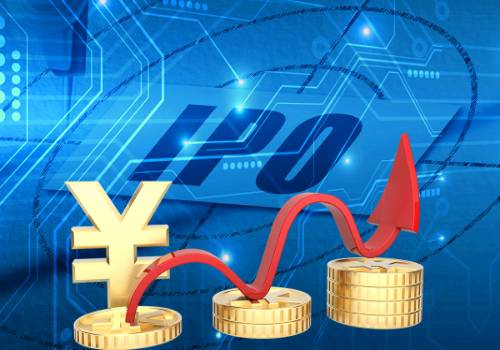
俏妃竹纤维卫生巾(俏妃竹纤维卫生巾)
热门 -

官山窑遗址
焦点 -

天天热消息:骁龙8 Gen2快充神机将至!真我GT Neo5 Pro闪充飙至240W
时尚 -
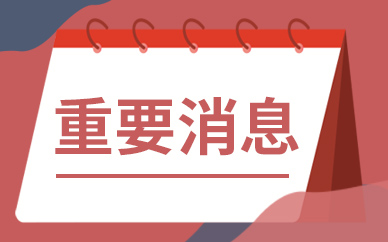
环球即时:寓意朋友诗句有哪些古诗 2.表达对好友的美好祝福的诗句
品牌 -

真切近义词_真切
新闻 -

Meta Quest 3将是一款“非常棒的Quest Link头显”
热门 -

qq聊天页面怎么设置_如何设置QQ聊天炫彩字体
品牌 -

全球快资讯:西安经开区小学排名一览表_西安经开区
男装 -

官匪斗|天天新资讯
供应 -

psv怎样连接ps4_psv怎么连接电脑-天天新动态
女装 -

许嵩歌曲大全100首完整版(许嵩车祸)
热门 -

密歇根大学消费者调查主任JoanneHsu
热门 -

全球热讯:亚裔球赛中遭殴打_亚裔vs欧洲巨大黑棒
新闻 -

笔记本总是频繁自动关机_笔记本频繁自动关机 精选
热门 -

AI重塑科技创新范式 2023科技创新智库国际研讨会在沪举行|天天观点
女装 -

天天要闻:斧牛加速器口令兑换码2023年7月最新-斧牛卡密领取
新闻 -

《青年说》第四十七期 他的第二故乡在南极
男装 -

记者:乌姆蒂蒂被推荐给国米,但国米有其他优先目标
热门 -

央行:加大宏观政策调控力度,精准有力实施稳健的货币政策 全球快看点
热门 -
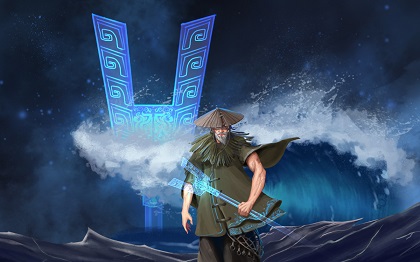
朝阳公安开展毒品预防教育宣传活动
女装 -

当前热门:冰箱英语怎么读refrigerator_冰箱英语
时尚 -

官方:荷兰名宿克鲁伊维特执教土超球队阿达纳体育 环球今亮点
热门 -

俄军事专家:美国“毒刺”导弹在乌克兰战果有限 俄版“毒刺”更强大_报道
男装 -

东海证券为华夏中证500ETF提供主做市服务
女装 -

朔马珞 上海机械设备有限公司_对于朔马珞 上海机械设备有限公司简单介绍
热门 -

一年营收超167亿元,波司登卖起千元防晒服,管理层:消费者是认可的
热门 -

必玩steam夏日特卖游戏大全 有哪些值得入手的夏促游戏
热门 -

9804.1万名!数读最新中国共产党党内统计公报-环球时讯
新闻 -

达仁堂-600329-百年品牌底蕴,混改落地焕发新生
热门 -

大模型加持,云知声的上市之路会更顺吗?
热门 -
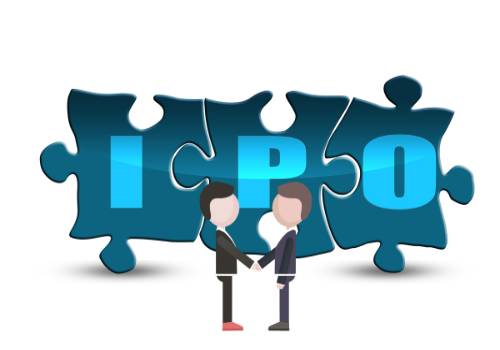
简讯:金金网投稿入口不负韶华_金金网首页投稿入口
时尚 -
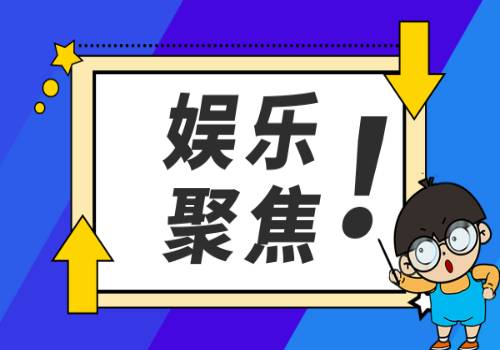
环球速看:CASA出国获200万天使轮融资
时尚 -

环球速看:菊科莴苣属植物_莴苣 菊科莴苣属植物
热门 -

一起为孩子高考加分 青岛十七中“四进一见”进家庭活动为考生答疑解惑-天天快讯
品牌 -

环球关注:76岁!纵身一跃!杭州这位大伯真男人
热门 -

打通中下游产业链 成都光伏产业加速发力
新闻 -

速递!全市加快推动市属国有企业市场化转型发展
热门 -

市场监管总局部署开展经营主体严重违法失信行为专项治理行动-每日速看
供应 -

硝酸铵加水溶解现象(硝酸铵加水) 今日要闻
热门 -

香港举行“庆回归26周年健乐跑”活动
热门 -

官方回应:网传奔驰和吉利退出smart股东行列为不实消息
新闻 -

消息称苹果 iPhone 未来可直接拨打卫星电话、上网 热点在线
热门 -

世界速讯:意媒:米兰不会放弃引进比利亚雷亚尔前锋楚克乌泽
时尚 -

夫子庙游玩攻略_夫子 全球快播
供应 -

今日观点!7月起一批新规将施行 涉铁路出行、消费者权益、低保标准等
男装 -

删除的qq好友如何给名片点赞_删除的qq好友如何恢复_天天看热讯
热门 -

环球热点评!每体:梅西将穿漫威特别版球衣亮相迈阿密,印满美国队长盾牌
热门 -
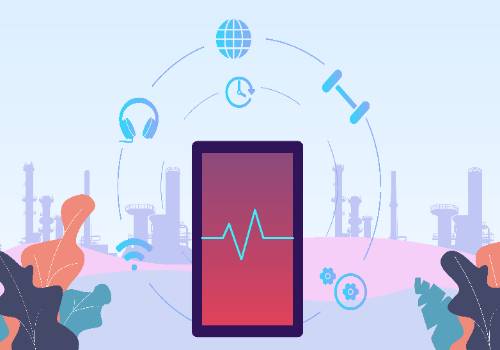
世界微动态丨鲁a88888宾利车主_鲁a88888
热门 -

学慧网怎么样 学慧网怎么样
品牌 -

急诊科医师查房手册-天天头条
热门 -

艘五笔怎么打_艘狐
热门 -

全省农商银行开展防范非法集资宣传|全球独家
新闻 -

每日速读!自制夜光颜料 在家怎么自制夜光粉
热门 -

赛轮轮胎:融资净买入1969.95万元,融资余额4.63亿元(06-30)
热门 -

国际科学家团队公布引力波背景辐射划时代发现
品牌 -

广汽集团:融资净偿还314.59万元,融资余额9.57亿元(06-29) 天天观焦点
时尚 -

长篇著名古诗有哪些 长篇古诗词有哪些?
热门 -

每日讯息!雷沃挖掘机370 雷沃挖掘机
供应 -

环球快播:是行业生死线 还是新时代的号角?一杯9.9元低价咖啡还能喝多久?
新闻 -

段冲村(关于段冲村介绍)
焦点 -

社保计提比例和基数_社保计提
滚动 -

【天天快播报】朗特智能(300916):6月30日北向资金增持13.47万股
热门 -

讯息:全球最安全的安卓机–黑莓DTEK50发布售299美元
女装 -

消息!房产中介纠纷怎么处理
品牌 -

全球资讯:成都天涯论坛首页_成都天涯论坛
滚动 -

沈阳8500座市管排水检查井全部安装防坠网
热门 -

6月30日基金净值:博时丝路主题股票A最新净值1.732,涨0.7%
热门 -

动物世界大百科狮子_动物世界大百科 天天看点
焦点 -

队记:马刺已经为多米尼克-巴洛提供了一份资质报价
男装 -

疏导是什么意思 疏导
热门 -

新体验新应用 元宇宙闪亮上海世界移动通信大会 世界热点评
焦点 -

短讯!曼联价值暴涨,卡塔尔银行家溢价25亿英镑竞购成功
热门 -

中山大学继续教育学院报名_中山大学继续教育学院
女装 -

电脑静音快捷键怎么解除_电脑静音快捷键
滚动 -

“我肚子一阵阵疼得厉害……”司机突发肾结石,交警紧急护送就医
品牌 -

热门:上市20年 中国人寿寿险内含价值增长近14倍
滚动
Copyright © 2015-2022 热讯服装网版权所有 备案号:豫ICP备20005723号-6 联系邮箱:29 59 11 57 8@qq.com


